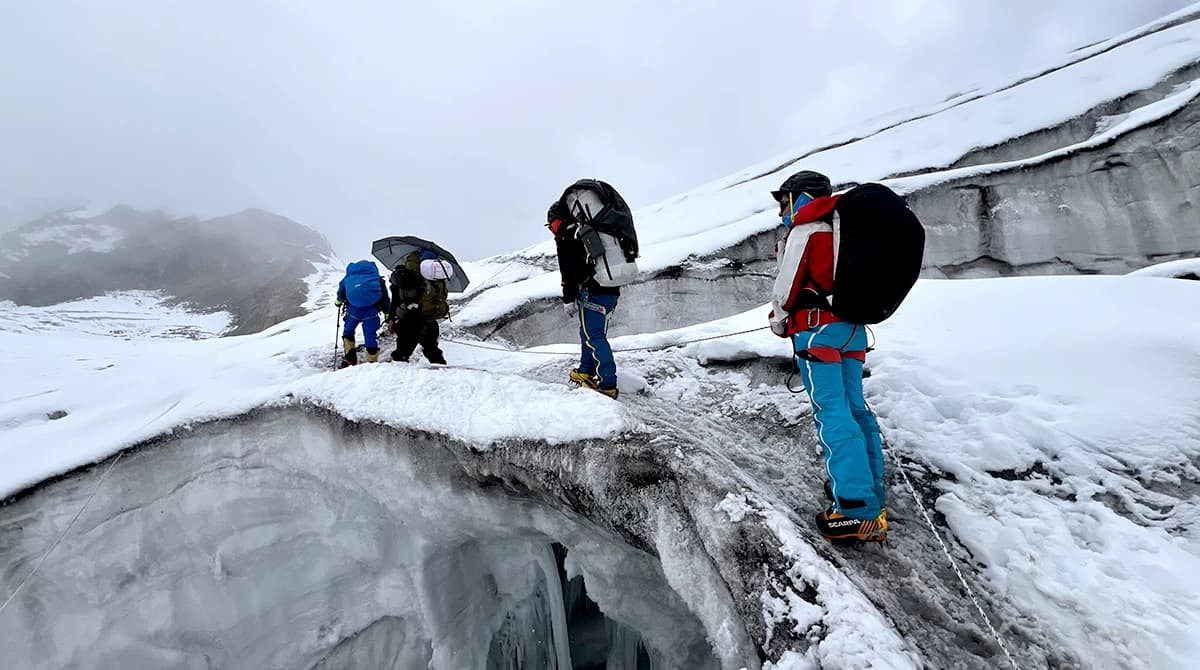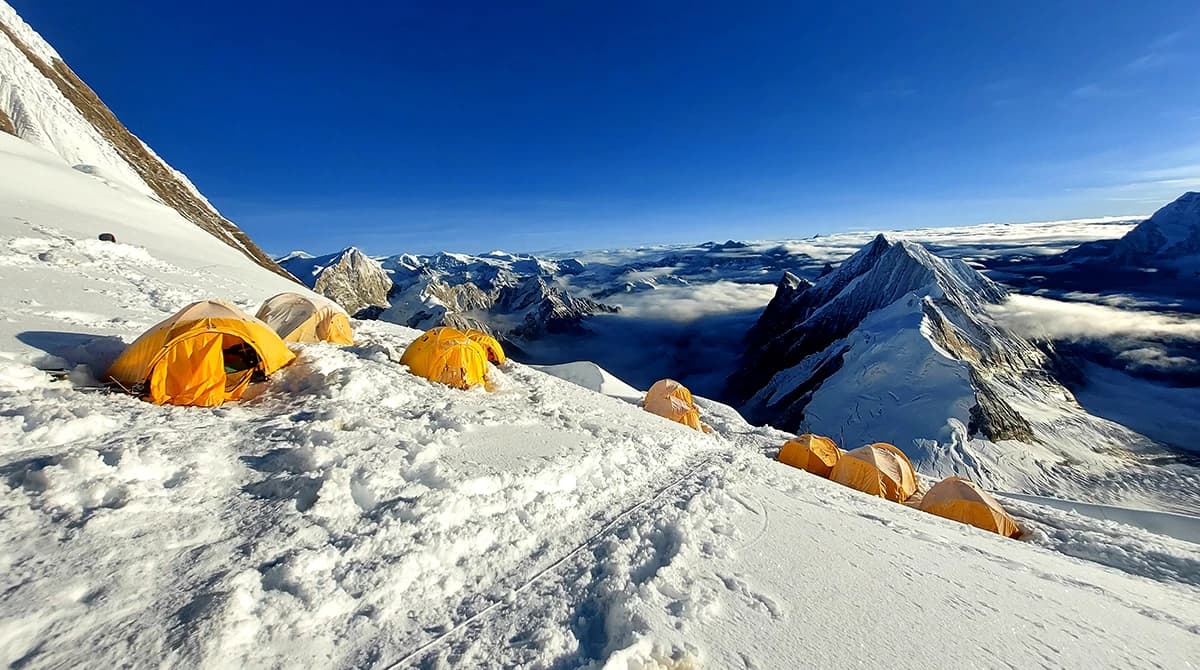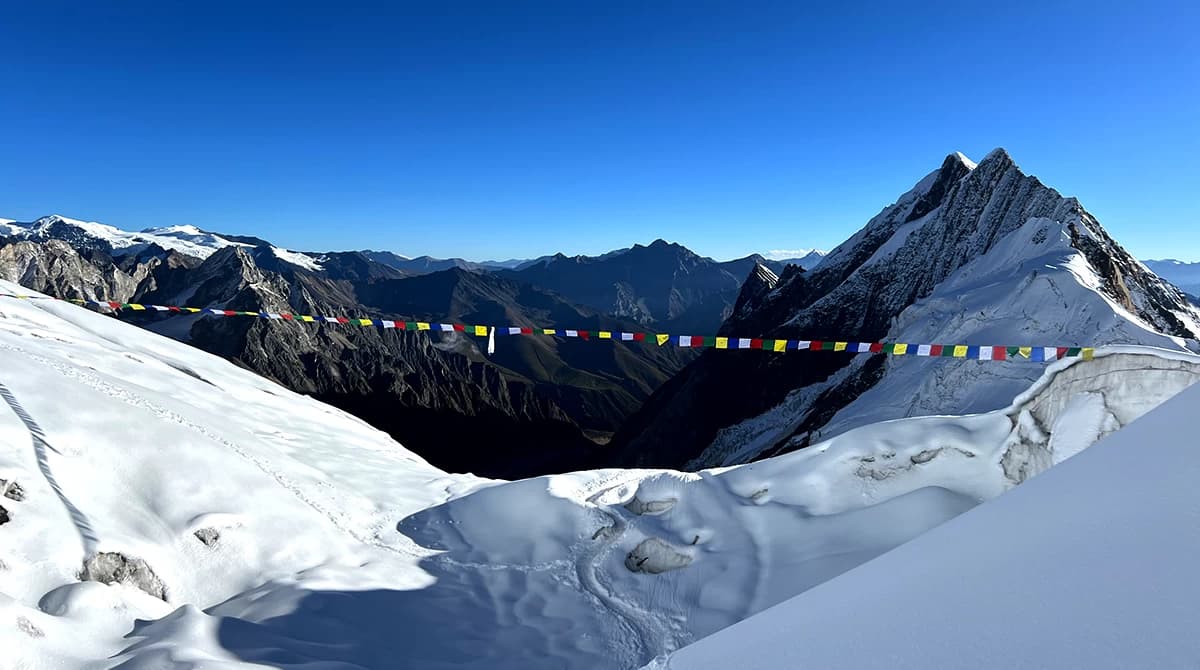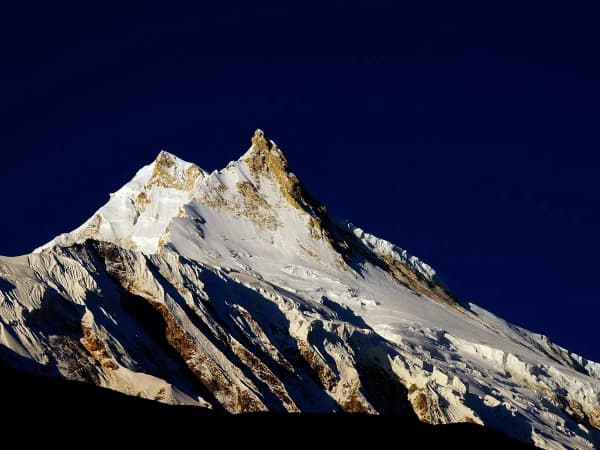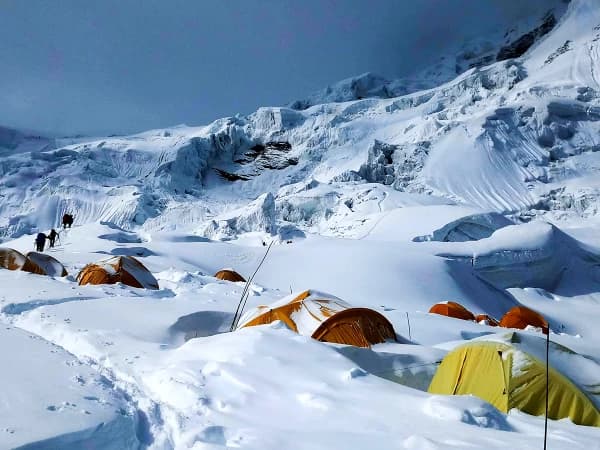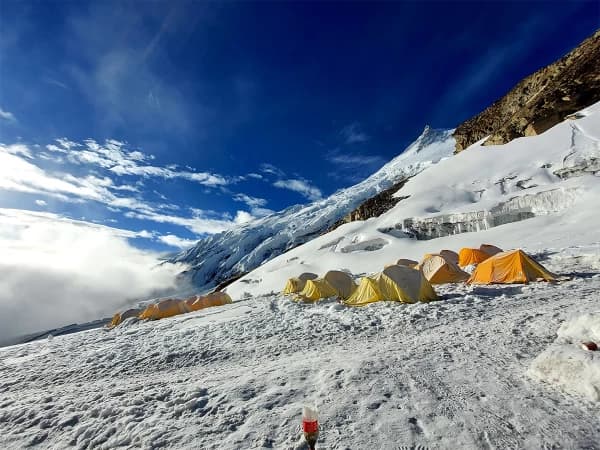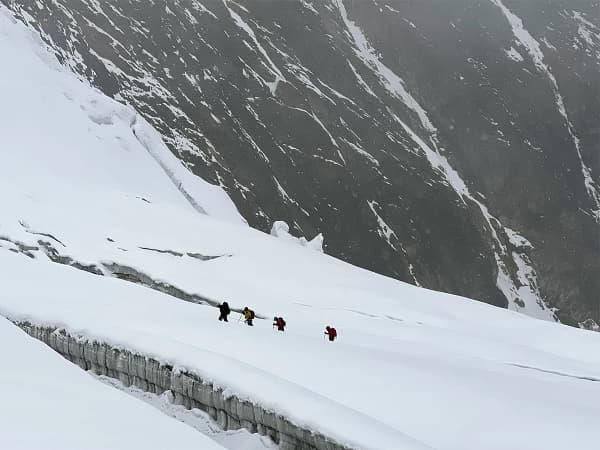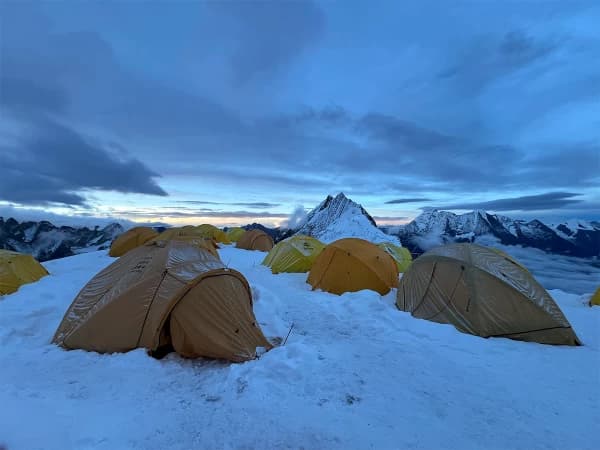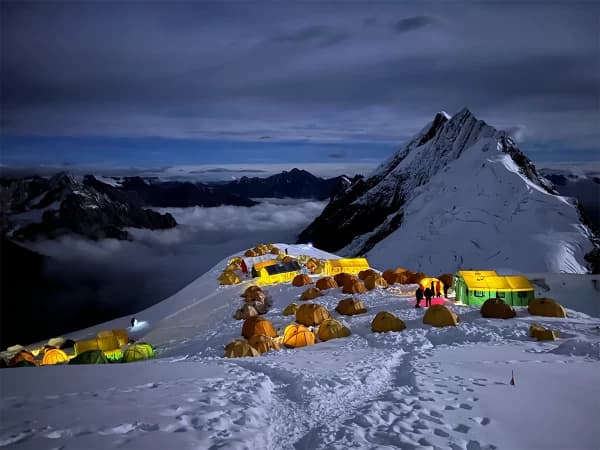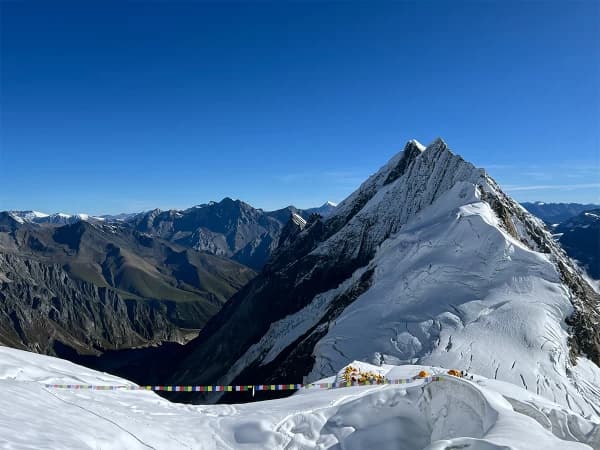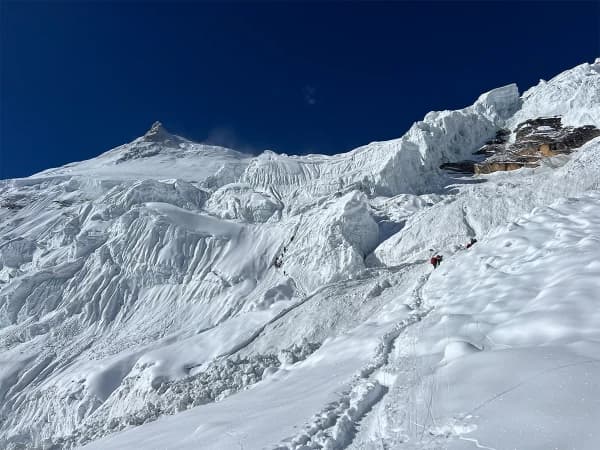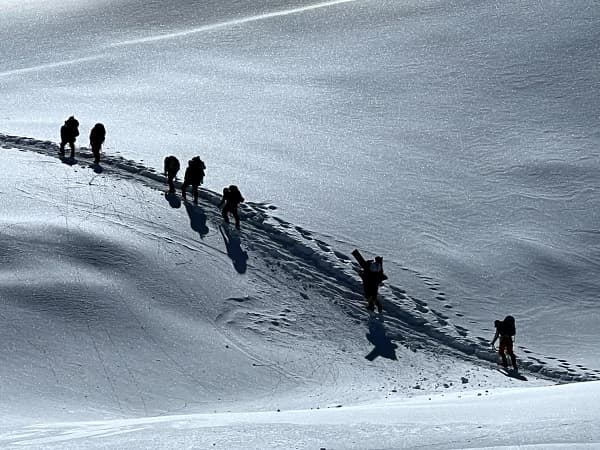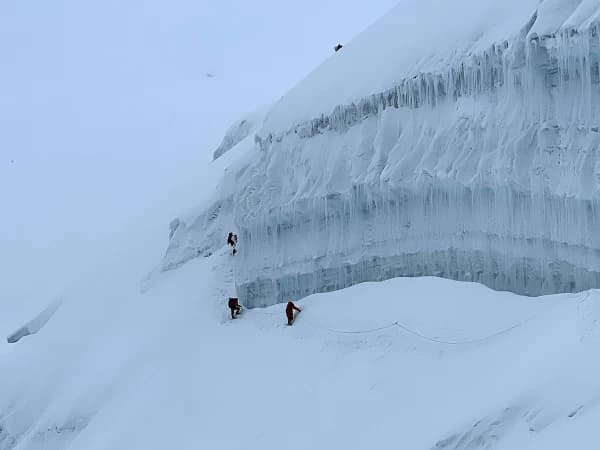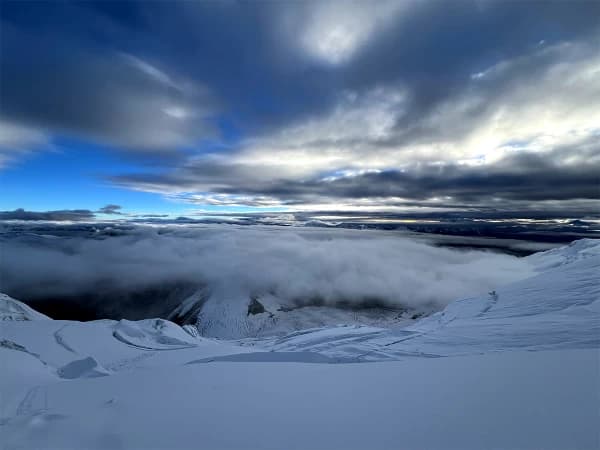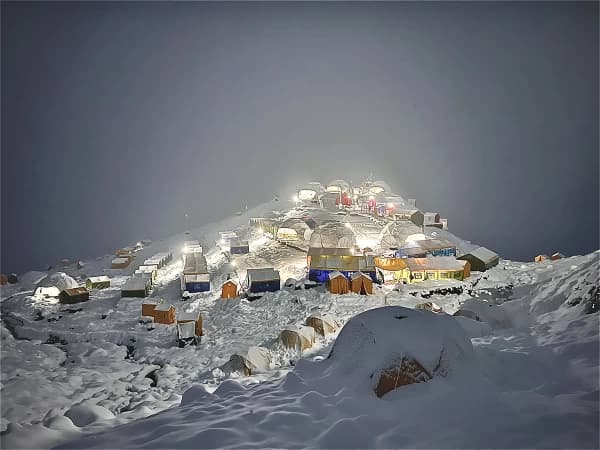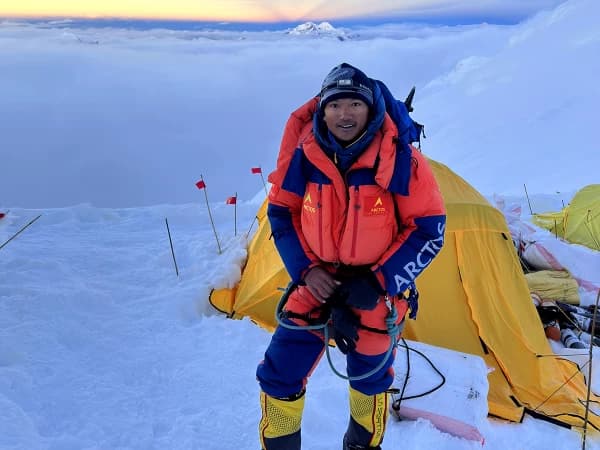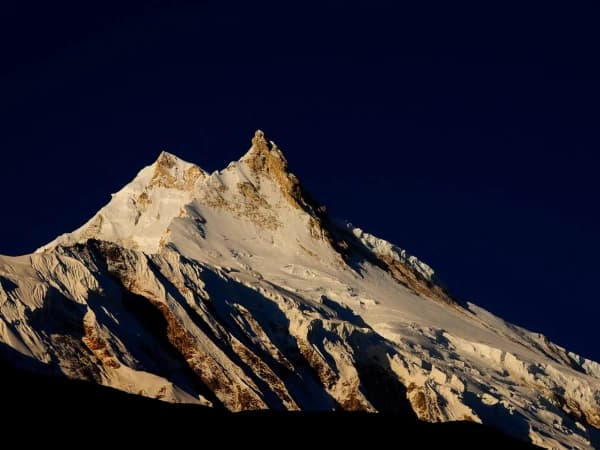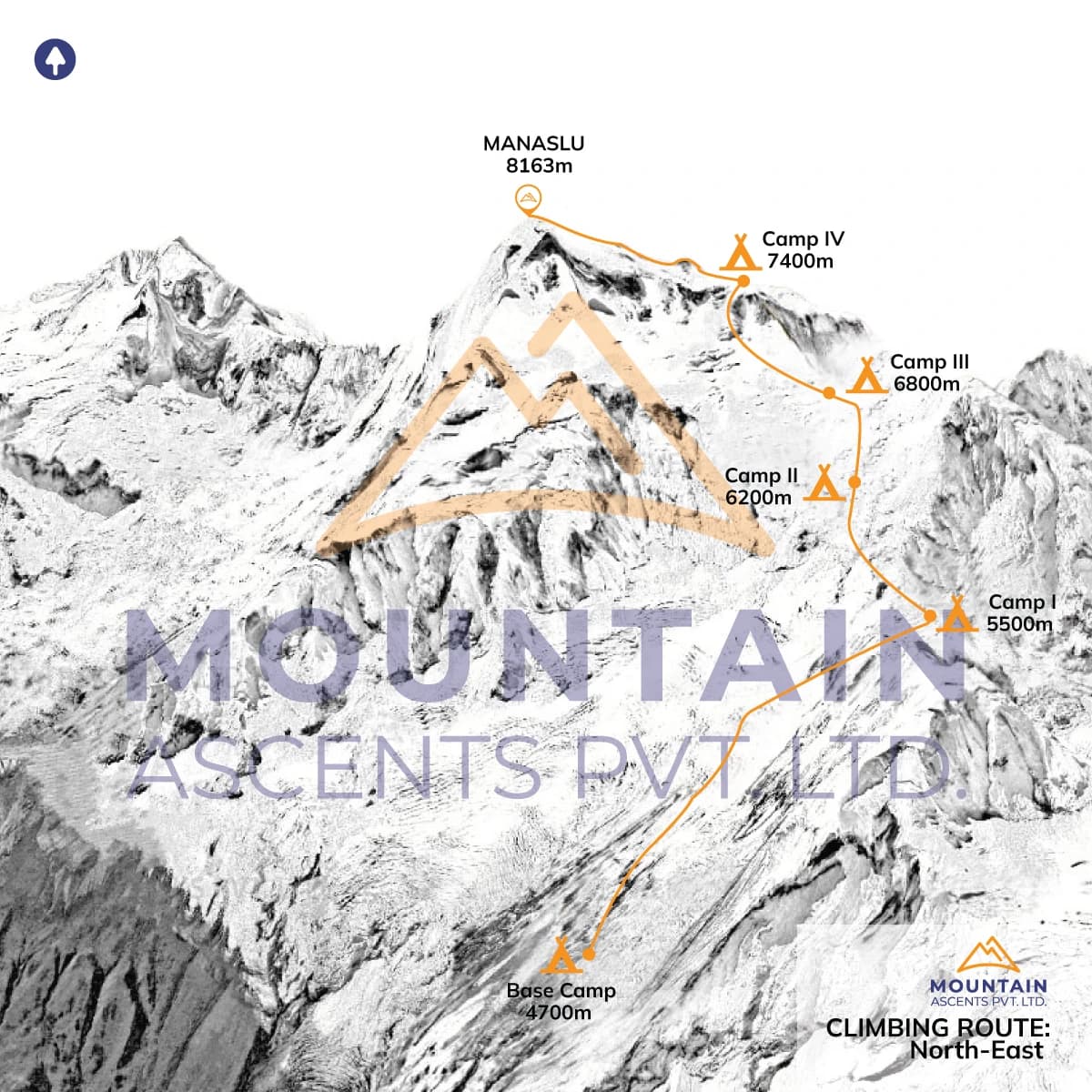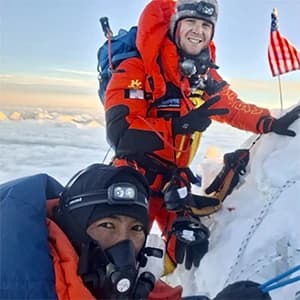The Manaslu Expedition is an unforgettable adventure of a lifetime to the summit of Manaslu, the eighth-tallest mountain in the world at an elevation of 8,163 m, also known as the “Mountain of Spirit.” Located in the Mansiri range of the Nepalese Himalayas, Manaslu is derived from the Sanskrit word "Manasa,” translating to “soul” or "intellect,” and is enough to tempt the heart of every adventurous soul across the globe. Lying about 100 km north-west of the capital city of Nepal, Kathmandu, the peak of Manaslu, a small but high subrange of the Himalayas in the north central of the country, offers climbers a more isolated and remote experience in comparison to the more crowded Everest and other popular Himalayan peaks.
The journey alone to the summit is an adrenaline-rushing experience 7,000 m above the Marsyangdi Valley floor and 64 km east of Mt. Annapurna, chasing the off-beaten route offering an immersive raw Himalayan wilderness and ancient cultures. The trekking route takes you through sweepingly changing landscapes, waterfalls, rivers, high-altitude Himalayan valleys, and villages such as Samdo and Samagaun simultaneously leading you to the Manaslu Base Camp and the peak itself, all under the Manaslu Conservation Area, a wildlife paradise.
This challenging Himalayan expedition typically begins with a joyful drive to Besisahar, also called the gateway to the Manaslu Trekking region from Kathmandu, and includes trekking several days through lush forests, remote villages, and the cultural and natural swanky region of Nepal before reaching the base camp. From Base Camp, climbers, and mountaineers begin to push for summits best suited for individuals with prior climbing experience in the high altitude to tackle some of the technical sections that demand the unswayed presence of mind and a significant level of physical fitness.
However, making it to the top of the Manaslu Peak rewards you immensely with the panoramic sight of Manaslu, Manaslu North, Nadi Chuli, Himal Chuli, and Simnang Himal, including views of the Ganesh Himal and Shringi Himal along the way. The feeling, which cannot be measured on any scale, hits the essence of humanity in the truest form of peace, and a profound accomplishment of one of the eight-thousanders in the world is next. Go the extra mile, be adventurous, and be abreast of the next great memory you can make with us today!
Trip Highlights
- Unwind at the UNESCO World Heritage sites of the Kathmandu Valley.
- Get to enjoy a scenically pleasurable drive away to remote lands of Nepal, from Kathmandu to Besisahar and back to Kathmandu.
- Embark on one of the popular Himalayan trekking routes that stands second to none, the Manaslu Circuit.
- Experience one-of-a-kind Tibetan Buddhist culture and a varied alternative to Cho Oyu.
- Trek from subtropical zone to arctic zone all amidst the unspoiled natural Himalayan beauty.
- Leave your footprint at one of the easiest eight towers in the world, Mt. Manaslu (8,163 m).
- Stay in Sherpa villages with ample opportunity to receive an insider into the Himalayan local life, warmed by genuine hospitality and ancient cultures.
- A golden chance to admire some of the elusive Himalayan wildlife such as red panda, Himalayan tahr, and others.
- A great Himalayan expedition to use as preliminary training for the preparation of the Everest Expedition to scale the highest mountain in the world, Mt. Everest (8,848 m).
- Witness the astonishing panoramic sights of several snowcapped Himalaya giants such as Nadi Chuli, Himal Chuli, Simnang Himal, Ganesh Himal, and Shringi Himal, including the eighth highest peak in the globe itself, Mt. Manaslu (8,163 m), and many more.
What to expect during the Manaslu Expedition?
An incredible adventure awaits you on the slopes of Mount Manaslu, both awe-inspiring and challenging, also known as killer mountains, however comparatively more accessible and achievable to some of the other eight-thousanders of Nepal. Engage yourself in complete exploration of a mountain rich in history that has a distinct place in climbing.
Get your climbing gear and equipment now for an incredible journey across Himalayan terrain dominated by jaw-dropping peaks. Home to a wide range of plants and animals, the region is equally thrilling and happening for nature lovers, photographers, trekkers, and climbers alike, with several chances of getting to encounter a red panda, an iconic snow leopard, a graceful musk deer, and the profusion of other interesting species.
An authentic, less traversed, and remote Himalayan journey
Mt. Manaslu falls in the remote part of Nepal, hence is hidden miles away from the hustle and bustle of modern life, observing a comparatively smaller number of trekkers, expeditors, and climbers compared to more popular climbing options like Everest or Annapurna. It leads through unspoiled green meadows and small towns, which even today follow the traditions and customs of the ancestors. Even the approach to Manaslu ranks as highly dramatic when combined with the alpine setting and snowy mountain views; it offers a new concept of raw adventure that may have been long lost from some of the famous routes due to the extreme popularity and crowd of tourists nowadays.
The majority of the population of the region is dominated by the people of Gurung and Tibetan-descended communities such as Sherpas in the higher altitude and others showcasing a strong Tibetan influence, offering an enriching cultural immersion along the way, such as in Sama Gaon and Lho, with several gompas, monasteries, and mani walls all adorned by vibrant prayer flags. Therefore, the Manaslu expedition is also an opportunity to connect to nature, the simple yet enriching lives of the Himalayan locals, and their unique culture, traditions, and daily lives.
The scenic Himalayan beauty, pristine nature, and haven for wildlife enthusiasts
As the Manaslu Conservation in Nepal, encompassing an area of 1663 square kilometers, remains largely untouched and remote, it is on an edge to breathtaking Himalayan views and a diverse ecosystem, ensuring a true sense of solitude and peace, perfect for individuals looking at an unparalleled natural escape without being interrupted by an influx of fellow climbers, trekkers, and mountaineers.
The entire trekking journey to the Manaslu Base Camp at an altitude of 4,800 m and beyond is predominated by the graceful presence of Himalchuli, Ngadi Chuli, Ganesh Himal, and Manaslu itself. The expedition progresses through a highly conserved natural environment housing widely stretched forests of oak, pine, and rhododendrons, glowy rivers, streams, and glacial lakes melting directly from the mountain ranges.
The area is usually teeming with wide species of wildlife, with potential encounters of endangered species like red panda, Himalayan musk deer, snow leopard at higher altitudes, Himalayan monal, blood pheasant, and Tibetan snowcock, which come together to create a meditative ambiance catering to mountain enthusiasts, trekkers, birdwatchers, photographers, and nature lovers alike.
Trekking to the Manaslu Base Camp
The Manaslu Expedition involves several days of trekking to reach the base camp. Devoid of direct access via roadways or airlines, climbers, expeditors, or trekkers have to set for numerous leg days through serene regions of Nepal, following the Budi Gandaki River until reaching the Manaslu Base Camp at 4,800 m above sea level.
Unlike the summit push, the trekking journey to make it to the base camp, serving as a scenic vantage point and natural amphitheater embodying the ultimate serenity alone, might not necessarily require any sort of climbing gear and equipment. Starting from Besisahar, you will walk past traditional villages, verdant hills, and suspension bridges and gradually proceed to the alpine region with essential acclimatization.
The base camp is a resting, sleeping, and dining spot for climbers across the earth looking forward to conquering the summit. Generally, tents are set up by local operators, such as Mountain Ascents, where you may also have access to solar power and satellite communication, as other amenities tend to get limited at such extreme altitudes.
The base camps are also the place that you will use for acclimatization and training as guided and bried by your mountain guide, trip leaders, and experts before a final push to higher up the mountain.
Technical climbing phases, camps, and personal achievements
Technical climbing and hiking begin upon your arrival at the Manaslu Base Camp. As you ascend to Camp I (5,700 m/18,700 ft), Camp II, Camp III, and Camp IV through the Manaslu glacier, there are high chances of encountering crevasses, rugged, and icy sections demanding strong navigating skills, as well as the use of fixed ropes and other climbing equipment in the high altitude.
Each camp is a representation of a milestone of the Manaslu Expedition requiring profound acclimatization, rotation to the base camps, and some additional climbing skills. The Manaslu Summit provides you with the true challenge of high-altitude mountaineering, making months of preparation bear fruit.
Therefore, a successful Manaslu summit grants you an extraordinary achievement that lets you refine your technical climbing mastery, is a testament to your endurance and mental strength, and also fosters strong teamwork and leadership to remember for life.
Affordable alternatives to Cho Oyu or Shishapangma
Unlike Cho Oyu or Shishpangma, which is often considered the practice ground before attempting a summit push to the top of the world, Mt. Everest (8,848 m), Manaslu is entirely located in Nepal and is more affordable in terms of permit fees, trekking and climbing logistics, and guiding services.
The Manaslu expedition, compared to other popular summit pushes, is less crowded with a high success rate and less technical than Shishapangma, with the naturally and culturally abundant Manaslu Trekking region of Nepal offering excellent value for climbers seeking a more budget-friendly option yet equally challenging with equivalent rewards.
Why is the 36-day itinerary best for an expedition to Manaslu?
Your landing at the Tribhuvan International Airport (TIA), Kathmandu, Nepal, marks the beginning of your 36-day Manaslu expedition. The official embarking begins the third day after a day of acclimatization in the Kathmandu Valley, boasting at least seven of the UNESCO World Heritage Sites with a scenic driveaway to Besisahar and then Dharapani, the trek starting point to the Manaslu Trekking region.
From Dharapani, then the trek gradually progresses through several traditional Himalayan villages dotted in between the green valleys amidst the verdant hills and serene Himalayas, with a spectacular glimpse of several snowcapped mountain peaks dominating the sky horizon. Gho, Bhimthang, Samdo, and Sama Gaon are some of the popular villages you will stop by for the night as you ascend to the Manaslu Base Camp and the summit peak of Manaslu itself.
These traditional mountain villages, home to the large population of indigenous communities of Gurung and Sherpa in the higher altitude, provide you with accommodation for a cozy night, filling meals, and intimate cultural insight and way of life throughout the trek days, except during the climbing period from Manaslu Base Camp and onwards to Manaslu Peak.
Then, the 11-29 days of the 36-day climbing itinerary and route for the Manaslu Expedition are allocated to ensure your victory at the summit and begin a descending journey. The descent also takes place through yet another pair of typical Himalayan settlements that goes by Sama Gaon, Namrung, Philim, and Maccha Khola before finally boarding a drive back to the capital city of Nepal, Kathmandu, for a departure to your home country.
The 36-day itinerary allows for proper acclimatization, one entire day at Bhimthang, and several days of acclimatization rotations from Manaslu Base Camp onwards, mitigating the risk of altitude sickness (AMS) and increasing the chances of a successful summit, including gradual ascent through the scenically mesmerizing Manaslu Circuit without rushing the pace with enough timeframe for rest, exploration of notable highlights, and summit attempts, hence is considered an ideal route for the Manaslu climbing.
36-day Manaslu Expedition cost for 2025/2026
The Manaslu Summit cost in 2025/2026 can vary significantly based on numerous factors, such as the level of services included, personal spending habits, the sort of trip you are looking forward to (guided or partially guided), the amount you wish to spend on equipment, logistics, and support, i.e., the Manaslu Expedition standard package cost can range anywhere from USD 15,000 to USD 18,000.
However, if you're looking forward to a luxury experience during the journey, it can cost you starting from USD 20,000 to USD 25,000 and more. For budget-conscious climbers and mountaineers, the Manaslu expedition can come at a way cheaper price than Everest,.
Why Trek with Mountain Ascents?
Mountain Ascents provides a variety of packages to suit different needs, from standard to premium, allowing for a tailored and pleasant journey. Every trekker may count on the unwavering assistance of the team, which will be led by climbing guides with years of extensive experience and extensive qualifications. The company ensures a smooth planning process through the provision of comprehensive documentation, enabling participants to focus exclusively on the planned adventure. Mountain Ascents goes above and above to make attaining aspirations a reality, putting in all effort to make each trip memorable and successful.
Our Strengths
- Certified and Experienced Guides
- High Success Rate
- Immersive/ Authentic Experience
- Trek/ Climbing Confidence and Highly Motivated Crew
